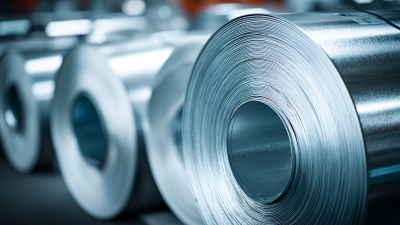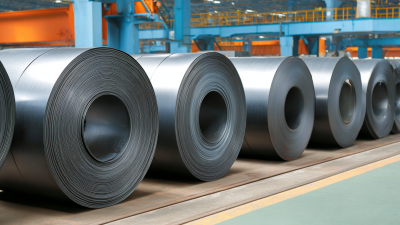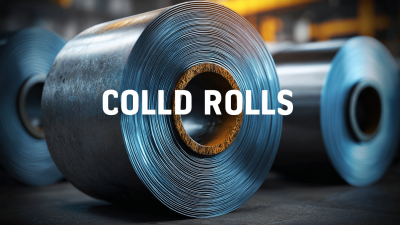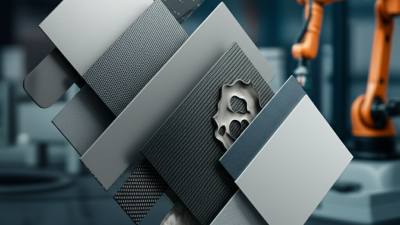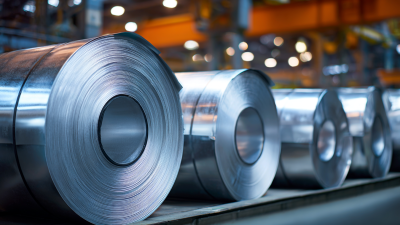In recent years, the construction and manufacturing industries have witnessed a growing need for innovative materials that not only meet functional requirements but also align with sustainability goals. Galvanized coil, known for its excellent corrosion resistance and durability, has long been a staple in these sectors.

According to a report by the Global Market Insights, the galvanized steel market is projected to surpass USD 150 billion by 2026, driven by its increased adoption in construction and automotive applications. However, as environmental concerns rise and regulatory standards become more stringent, exploring alternative materials has become imperative.
This blog will delve into various alternatives to galvanized coils, evaluating their properties, benefits, and potential applications, allowing professionals to make informed decisions for their upcoming projects.
When considering materials for your next project, the choice between galvanized coils and aluminum alternatives can significantly impact both performance and cost-effectiveness. Galvanized coils are well-known for their durability and corrosion resistance, making them a popular choice in various applications. However, as we explore aluminum options, the benefits of weight savings and enhanced workability become increasingly appealing. Aluminum offers a lightweight solution that can reduce transportation costs and ease the installation process, particularly in projects requiring frequent relocation or adjustments.
Moreover, the properties of aluminum, such as its resistance to rust and ability to conduct heat and electricity, provide unique advantages over galvanized coils. For instance, in applications involving outdoor structures, aluminum's lightweight nature can prevent bending or warping under stress while maintaining structural integrity. As designers and builders seek sustainable alternatives, the recyclability of aluminum further boosts its appeal, potentially aligning with environmentally-friendly project goals. The decision ultimately hinges on balancing the specific needs of your project with the strengths of each material to find the best fit.

As 2024 draws to a close, the ongoing comparison between galvanized coils and stainless steel for construction projects continues to receive attention. While galvanized steel remains popular for its cost-effectiveness and resistance to corrosion, its durability under extreme conditions has raised concerns among industry experts. Reports indicate that the domestic demand for galvanized sheets has been softening, with a significant decline of approximately 15% in the last quarter compared to the previous year, primarily driven by increased competition and fluctuating raw materials costs.
In contrast, stainless steel presents a compelling alternative, especially in environments that demand heightened durability and corrosion resistance. A recent industry study highlighted that stainless steel's life expectancy can exceed 50 years, significantly outperforming galvanized solutions, which typically last around 20-30 years under similar conditions. Furthermore, global demand for stainless steel has risen sharply, with a year-on-year increase of 10% noted in exports, as more project managers opt for materials that promise longevity and reduced maintenance costs amidst rising steel tensions between India, the US, and China. The comparative benefits of stainless steel warrant serious consideration for future building projects aimed at sustainability and performance.
When considering alternatives to galvanized coils for
construction and manufacturing projects, coated steel
emerges as a compelling option. The cost-effectiveness of coated steel lies in its ability to deliver
durability and resistance to corrosion at a lower price point compared to traditional
galvanized materials. By applying a protective coating, coated steel can provide a robust barrier against
the elements, which significantly reduces the long-term costs
associated with maintenance and replacement.
Moreover, coated steel offers flexibility in design and manufacturing
processes. It can be easily shaped and customized to meet specific project requirements, making it a versatile
choice for engineers and designers. The availability of various coatings allows for enhanced aesthetic appeal
while maintaining the structural integrity needed for critical applications. As projects evolve in scope and
complexity, choosing coated steel can ultimately lead to better budget management and the opportunity to
allocate resources towards other vital aspects of a project.
The environmental impact of materials used in construction and manufacturing cannot be overstated, especially when it comes to widely used options like galvanized coils. Galvanization, while providing excellent corrosion resistance, has a significant carbon footprint due to the energy-intensive coating process. Additionally, the zinc used in the galvanizing process can lead to soil contamination and water pollution when improperly disposed of, presenting a risk to local ecosystems and communities.
In contrast, alternative materials such as aluminum or stainless steel may offer more sustainable options. For instance, aluminum is lightweight, recyclable, and has a lower energy requirement for production, making it an attractive substitute for galvanized coils. Similarly, stainless steel, known for its durability and resistance to corrosion without the need for additional coatings, presents a long-term solution that minimizes environmental degradation. By exploring these alternatives, builders and manufacturers can make more informed decisions that not only meet their project needs but also contribute to a healthier planet.
When considering alternatives to galvanized coils for construction and manufacturing, evaluating performance metrics is essential for making informed decisions. Different materials exhibit distinct characteristics that can enhance or compromise the requirements of a project. For instance, steel made with low greenhouse gas emissions is gaining traction, particularly with recent advancements in product-level data tracking. This allows manufacturers to quantify the environmental impact of their materials, which could be a game changer for industries focusing on sustainability.

As demonstrated in the case of a leading automotive manufacturer working with a prominent steel producer, the shift towards low GHG emissions steel showcases how innovative material options can offer not just performance advantages, but also align with corporate responsibility goals. This initiative highlights the potential benefits of adopting materials that not only meet structural demands but also contribute to a reduced carbon footprint, making them increasingly viable alternatives to traditional galvanized coils. By comparing such metrics, businesses can optimize procurement processes while also adhering to modern sustainability practices.
